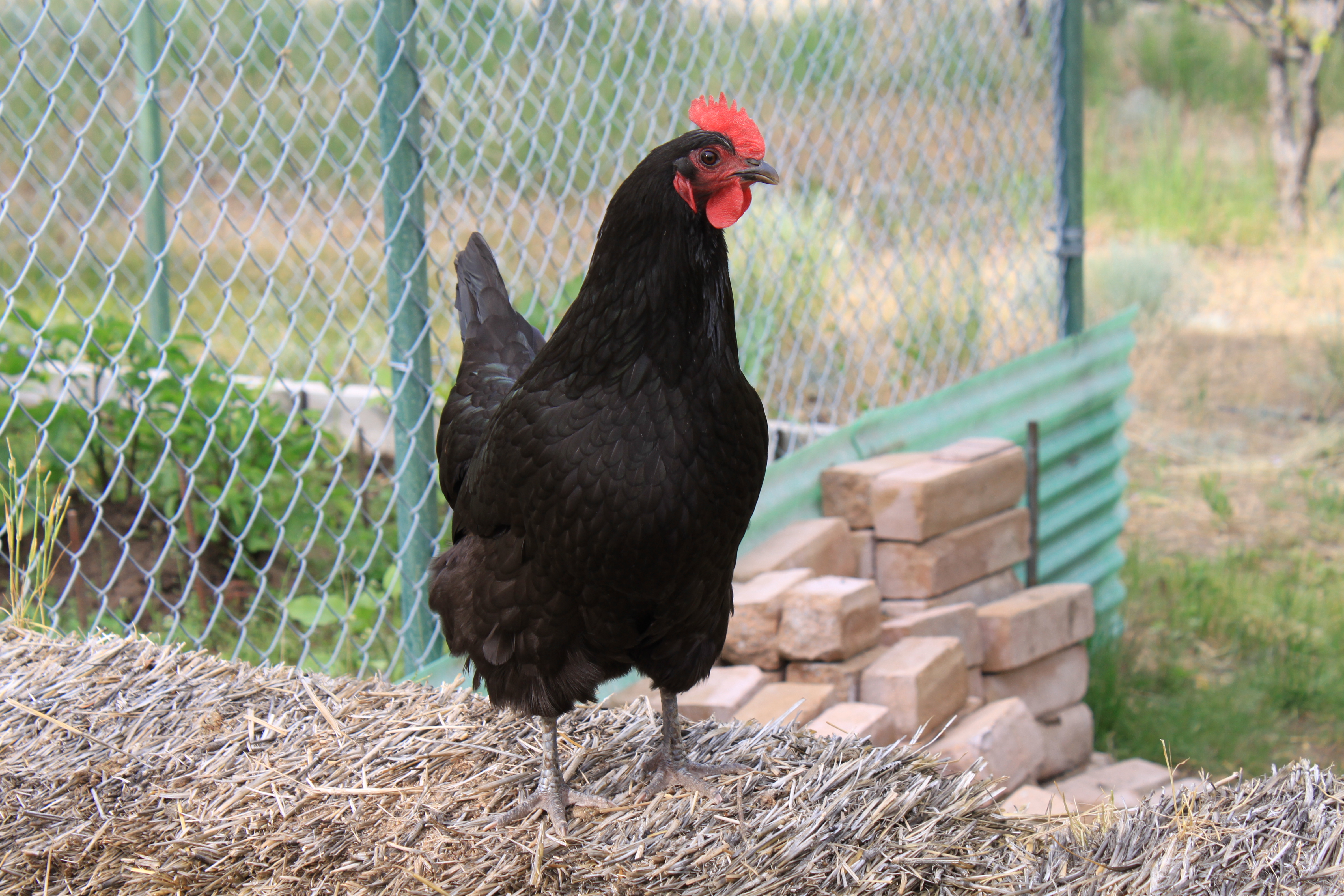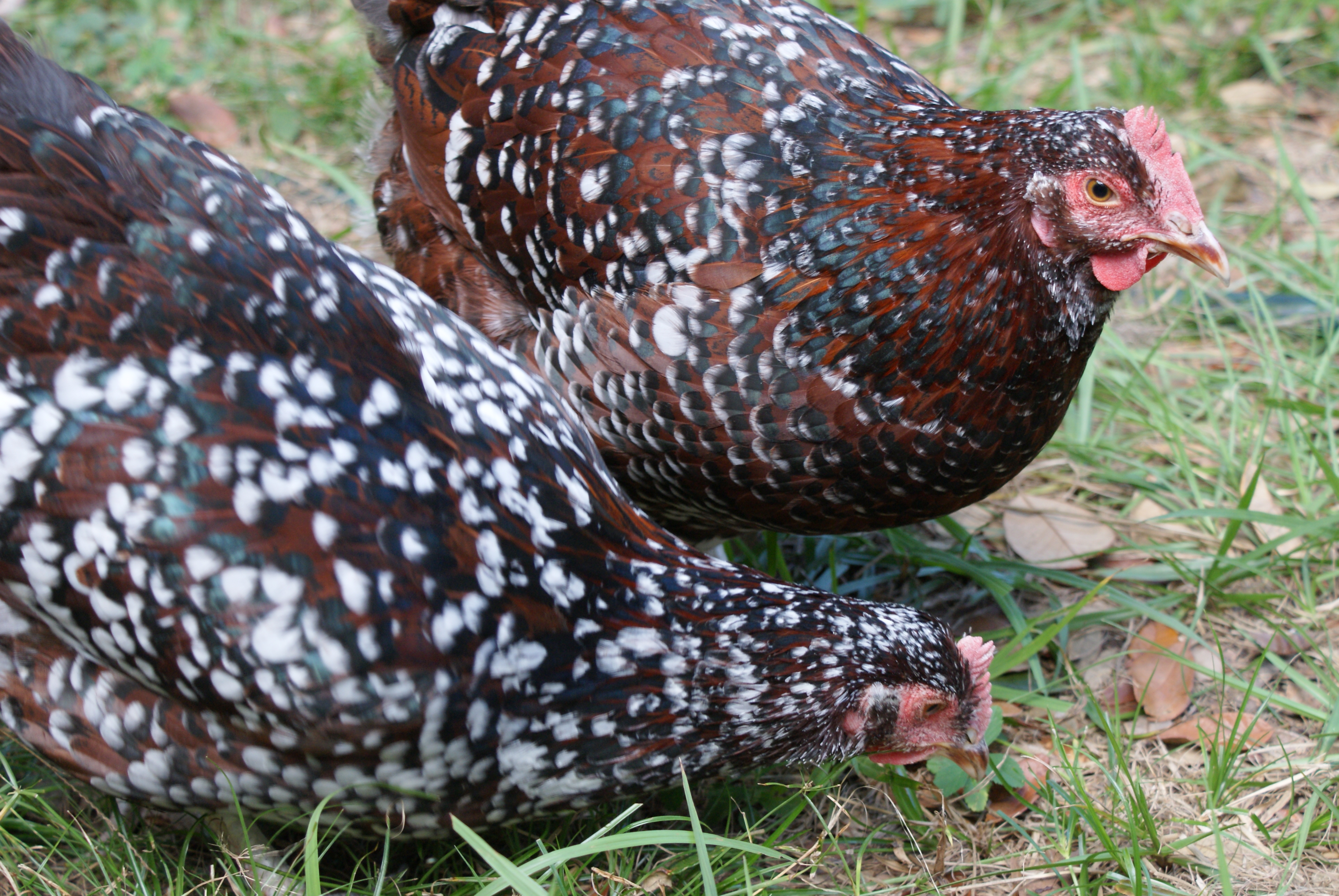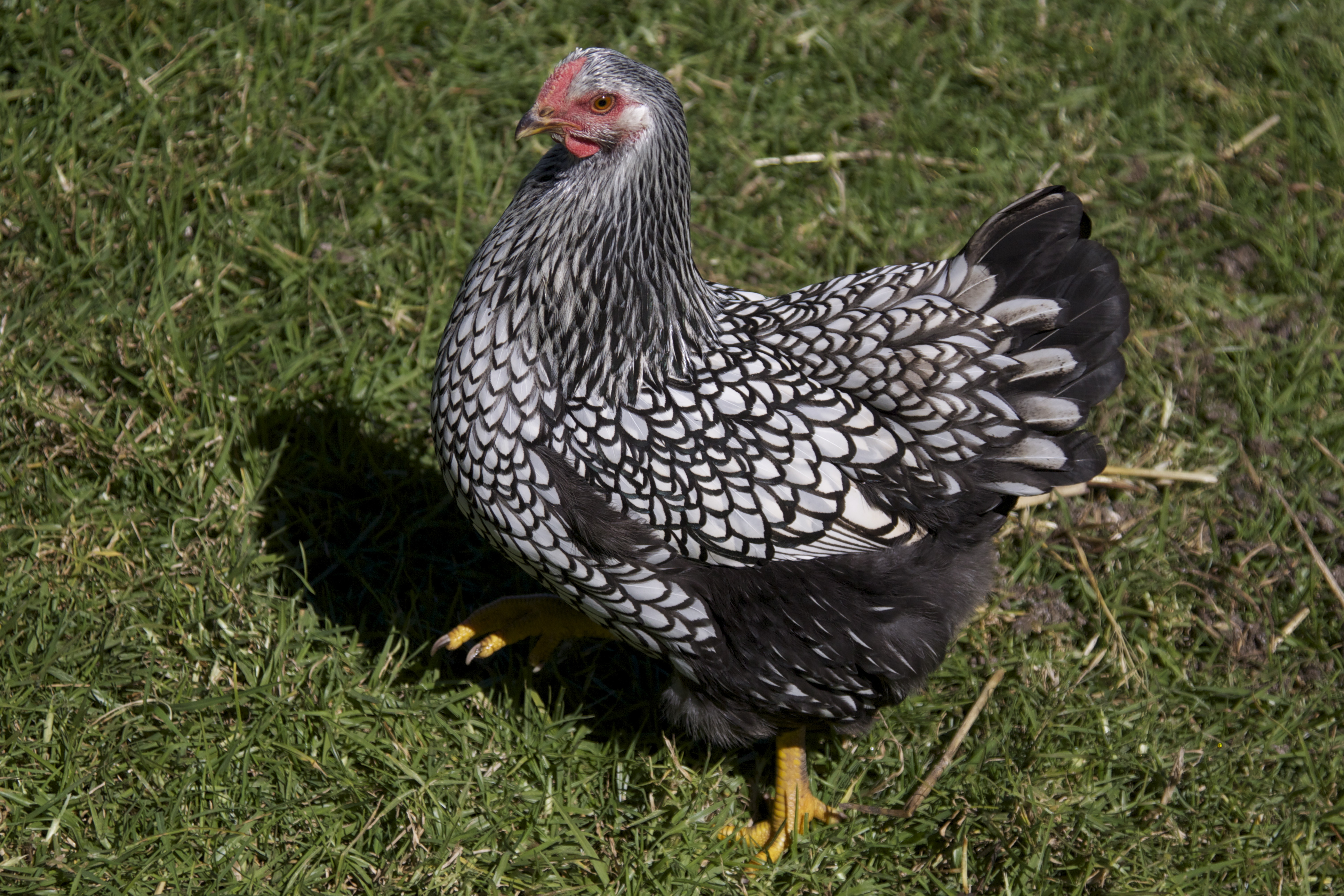There are many different feed types, and they all have their advantages and disadvantages. I'll list as many as I can here, but you may want to do further research elsewhere. The following feeds are the most commonly found and popular, and I believe you can find them in both the UK and US, if not other countries too.
 |
| Bonnie and Daffy help themselves to pellets. Credit: birdbrain99 (author) |
Pellets - Probably the most popular feed, I use this for my birds. It should contain at least 16% protein for healthy, laying hens. Layer's Pellets provide most of the essential ingredients to keep your hens healthy whilst laying. Layer's Pellets should only be used after 18-25 weeks of age, or when the first egg is laid. Before that, Grower's pellets should be given. You should not feed grower's pellets to laying birds, either. If you have cocks and hens, layer's pellets are fine to feed to all of them.
Mash - This is quite a popular option too. Basically it is the same as pellets, but it has not been compressed into pellets. It is finely ground into lots of bits or a powder. If you don't have much space for your chickens, this will stop them getting quite so bored as it takes longer to eat than the same amount of pellets. However, I don't feed it often to my hens because of a beak problem one has. She finds pellets easier to eat.
You can mix mash with a little water to make a kind of paste but if you do you will need to change it a couple of times a day so that it doesn't go sour. My hens adore it though, so I just give it as a healthy treat sometimes! You can leave it dry, but depending on how fine it is the chickens may be able to pick out their best bits.
 |
| Mixed corn (also known as "Scratch") is a great treat. Credit: birdbrain99 (Author) |
ground or in straw where the chickens will be able to
scratch around for it, keeping them active and preventing them from becoming bored. I tried mixing it in with the chickens' pellets, but they just chucked all the pellets out of the hopper, so I was basically feeding them corn and wasting a lot of good food! So it is best to choose another feed and just use corn as a supplementary feed.
Oats - These must not contribute a main part in you chickens' diet as oats have hardly any nutritional value and your birds can run fat. I only feed as a very occasional treat and in the morning in winter when I scatter some down with the corn when the birds need the extra energy to keep warm.
Chick Crumbs - It is especially formulated for chicks and should not be fed after this stage.
Extras - Your hens will enjoy kitchen scraps, but this shouldn't be a main part in their diet. Make sure there is not a high sugar or salt content. They will love lettuce and salads but if you notice that their droppings look runny they could be eating too much greens or other foods so limit these, and if you notice that a certain food is having a negative effect on your chickens' health stop feeding it. There are many lists available on safe foods for chickens on the internet and in books, so please do your research before feeding. This article is a great starting point! As a rule, don't feed chicken scraps that are mouldy, off, or you wouldn't be ok about eating yourself.
If your hens are not free range then they will enjoy a bit of grass just make sure you cut it very small as it can cause Crop Impaction. It is advised not to feed grass cuttings from petrol lawn mowers.
Grit - This is not strictly a "feed", but should always be available. They use grit in their digestive system to help grind up the food. Oyster Shell grit should also be available, as it is an important source of calcium. You can by these online or at poultry/farm shops. If your hens are free-range they are unlikely to need normal grit, as they will probably find enough around, but Oyster Shell grit should still be provided.
How much will a chicken eat a day?
The average hen will eat about 110 - 150 grams a day, but it depends very much on the breed, where they live, the season, etc.
Clean out the feed hopper/trough immediately if it gets soiled or you notice any algae or mould. If not, every month or so. Use a safe poultry disinfect, and follow the instructions on the label carefully. Otherwise, you can use an ecological washing up liquid and rinse well.
Where should the feed be placed, and when should I feed the chickens?
The hopper should be placed in a dry, sheltered and light area, where the chickens can access it easily. It is best if they have their main feed available at all times, but treats, corn, etc. can be given when you like (as long as it's not enough to fill them, preventing them from eating their main feed) and as long as you've established a good routine.
 |
| Hand feeding is one of the best ways to tame chickens! Credit: birdbrain99 (Author) |
- Do not use feed after the best before end date.
- Store the chicken feed in a cool, dry place.




